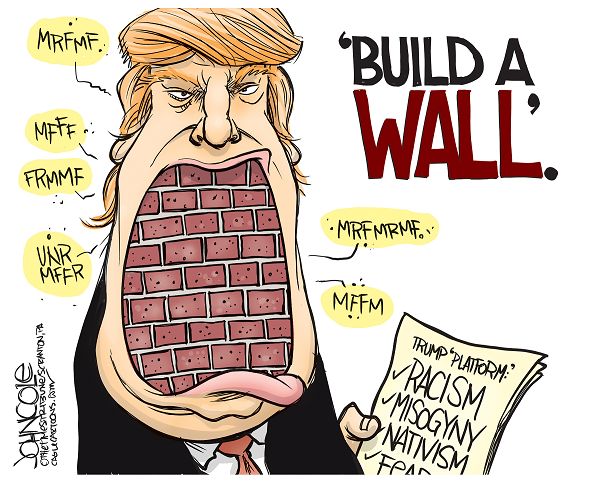A study was released this year about the language used by political candidates and placing it on a grade level. While most politicians utilized language that was around 6th to 8th grade level and having speeches at mainly an 8th grade level, Donald Trump was just below that and his speeches climbed to a 7th grade level.  Who knows if Trump is trying to speak at a lower than average grade level, but it is appealing to his working class voters.
Who knows if Trump is trying to speak at a lower than average grade level, but it is appealing to his working class voters.
The Washington Post stated that “more than 40 percent of Americans have only basic literacy skills,” and Trump is directly speaking to these citizens on a level they can understand and relate to. Many statistics have shown that the working class is usually less educated than other sects of the socioeconomic strata, meaning that they can easily interpret Trump’s language. Clinton and Sanders, during the primary, used higher vocabulary in their speeches, relative to Trump, probably alienating the working class in the process. Trump’s rhetoric is not just appealing to the working class, but is being understood by them and generating their support. Trump’s tactics, intentionally or not, are smart, seeing as most voters prefer a simpler vernacular from their politicians.
While Trump’s language is usually easily understood, there are sometimes when his rhetoric becomes “incomprehensible.” However, because it focuses on feelings over ideas, he is still rallying up the working class. During a speech in Nevada, Trump said that “I love the poorly educated” and his rhetoric of “basic and repetitive” phrases support this claim. Donald Trump has gained the support of the working class during most of this campaign cycle. It has been thought that it is because his arguments, like talking about the wall or bringing jobs back, but it just might also be that the working class both understands what his language and then likes his points.





